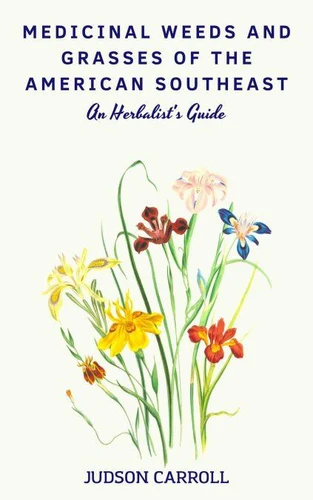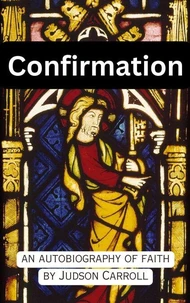Medicinal Weeds and Grasses of the American Southeast, an Herbalist's Guide
Par :Formats :
Disponible dans votre compte client Decitre ou Furet du Nord dès validation de votre commande. Le format ePub est :
- Compatible avec une lecture sur My Vivlio (smartphone, tablette, ordinateur)
- Compatible avec une lecture sur liseuses Vivlio
- Pour les liseuses autres que Vivlio, vous devez utiliser le logiciel Adobe Digital Edition. Non compatible avec la lecture sur les liseuses Kindle, Remarkable et Sony
 , qui est-ce ?
, qui est-ce ?Notre partenaire de plateforme de lecture numérique où vous retrouverez l'ensemble de vos ebooks gratuitement
Pour en savoir plus sur nos ebooks, consultez notre aide en ligne ici
- FormatePub
- ISBN8215607282
- EAN9798215607282
- Date de parution05/05/2023
- Protection num.pas de protection
- Infos supplémentairesepub
- ÉditeurWMG Publishing
Résumé
So many plants grow wild in on our remarkably diverse region that it can be very hard to differentiate between what is a weed and a wildflower. Originally, I had intended to include both weeds and wildflowers in this volume, along with grasses. But, that would have resulted in a book more than 1, 200 pages long! I finally decided to only include those plants officially designated as weeds (including a few grasses) by the regional universities..
Not that they are experts. After all, what decides a weed? Some of the plants listed as weeds are native, and others non-native. Some are labeled "noxious". as if that really means anything. Those so labeled are considered undesirable by the "experts." Essentially, a weed is any herbaceous plant that grows without human assistance.. Or, put another way, it is any plant that is growing where someone doesn't want it.
If we plant a bed of lettuce and we find chickweed growing among our lettuces, chickweed would be considered a weed. If we grow chickweed to include in our salads, it is not a weed, regardless the name. If we grow a lawn of ornamental grass and find dandelions, they are considered weeds. If we grow dandelions for food and medicine, they are not. Just as there are no truly native or invasive plants, as seeds have spread throughout the world, from place to place long before the first human foot touched the earth, there are no true weeds.
Many of the plants you will read about in this book are not only quite useful medicinally, but were brought to North America by European immigrants (and very likely by Asian and, perhaps Polynesian immigrants long before) to be grown as food and medicine. What is nice about "weeds" is that they often grow in poor soil and in conditions that cultivated vegetables and herbs could not survive. We do not have to till the soil, water or mulch these plants.
They are just there every year. We have only to take the time to learn about them, identify them and harvest them. I believe firmly that God has provided these plants for our needs, and it is a very foolish man who will curse such gifts and douse them with dangerous chemicals. A pocket full of plantain leaves is worth far more than a manicured lawn. Our ancestors who gave us these "weeds" must surely dismay our ignorance.
Not that they are experts. After all, what decides a weed? Some of the plants listed as weeds are native, and others non-native. Some are labeled "noxious". as if that really means anything. Those so labeled are considered undesirable by the "experts." Essentially, a weed is any herbaceous plant that grows without human assistance.. Or, put another way, it is any plant that is growing where someone doesn't want it.
If we plant a bed of lettuce and we find chickweed growing among our lettuces, chickweed would be considered a weed. If we grow chickweed to include in our salads, it is not a weed, regardless the name. If we grow a lawn of ornamental grass and find dandelions, they are considered weeds. If we grow dandelions for food and medicine, they are not. Just as there are no truly native or invasive plants, as seeds have spread throughout the world, from place to place long before the first human foot touched the earth, there are no true weeds.
Many of the plants you will read about in this book are not only quite useful medicinally, but were brought to North America by European immigrants (and very likely by Asian and, perhaps Polynesian immigrants long before) to be grown as food and medicine. What is nice about "weeds" is that they often grow in poor soil and in conditions that cultivated vegetables and herbs could not survive. We do not have to till the soil, water or mulch these plants.
They are just there every year. We have only to take the time to learn about them, identify them and harvest them. I believe firmly that God has provided these plants for our needs, and it is a very foolish man who will curse such gifts and douse them with dangerous chemicals. A pocket full of plantain leaves is worth far more than a manicured lawn. Our ancestors who gave us these "weeds" must surely dismay our ignorance.
So many plants grow wild in on our remarkably diverse region that it can be very hard to differentiate between what is a weed and a wildflower. Originally, I had intended to include both weeds and wildflowers in this volume, along with grasses. But, that would have resulted in a book more than 1, 200 pages long! I finally decided to only include those plants officially designated as weeds (including a few grasses) by the regional universities..
Not that they are experts. After all, what decides a weed? Some of the plants listed as weeds are native, and others non-native. Some are labeled "noxious". as if that really means anything. Those so labeled are considered undesirable by the "experts." Essentially, a weed is any herbaceous plant that grows without human assistance.. Or, put another way, it is any plant that is growing where someone doesn't want it.
If we plant a bed of lettuce and we find chickweed growing among our lettuces, chickweed would be considered a weed. If we grow chickweed to include in our salads, it is not a weed, regardless the name. If we grow a lawn of ornamental grass and find dandelions, they are considered weeds. If we grow dandelions for food and medicine, they are not. Just as there are no truly native or invasive plants, as seeds have spread throughout the world, from place to place long before the first human foot touched the earth, there are no true weeds.
Many of the plants you will read about in this book are not only quite useful medicinally, but were brought to North America by European immigrants (and very likely by Asian and, perhaps Polynesian immigrants long before) to be grown as food and medicine. What is nice about "weeds" is that they often grow in poor soil and in conditions that cultivated vegetables and herbs could not survive. We do not have to till the soil, water or mulch these plants.
They are just there every year. We have only to take the time to learn about them, identify them and harvest them. I believe firmly that God has provided these plants for our needs, and it is a very foolish man who will curse such gifts and douse them with dangerous chemicals. A pocket full of plantain leaves is worth far more than a manicured lawn. Our ancestors who gave us these "weeds" must surely dismay our ignorance.
Not that they are experts. After all, what decides a weed? Some of the plants listed as weeds are native, and others non-native. Some are labeled "noxious". as if that really means anything. Those so labeled are considered undesirable by the "experts." Essentially, a weed is any herbaceous plant that grows without human assistance.. Or, put another way, it is any plant that is growing where someone doesn't want it.
If we plant a bed of lettuce and we find chickweed growing among our lettuces, chickweed would be considered a weed. If we grow chickweed to include in our salads, it is not a weed, regardless the name. If we grow a lawn of ornamental grass and find dandelions, they are considered weeds. If we grow dandelions for food and medicine, they are not. Just as there are no truly native or invasive plants, as seeds have spread throughout the world, from place to place long before the first human foot touched the earth, there are no true weeds.
Many of the plants you will read about in this book are not only quite useful medicinally, but were brought to North America by European immigrants (and very likely by Asian and, perhaps Polynesian immigrants long before) to be grown as food and medicine. What is nice about "weeds" is that they often grow in poor soil and in conditions that cultivated vegetables and herbs could not survive. We do not have to till the soil, water or mulch these plants.
They are just there every year. We have only to take the time to learn about them, identify them and harvest them. I believe firmly that God has provided these plants for our needs, and it is a very foolish man who will curse such gifts and douse them with dangerous chemicals. A pocket full of plantain leaves is worth far more than a manicured lawn. Our ancestors who gave us these "weeds" must surely dismay our ignorance.















